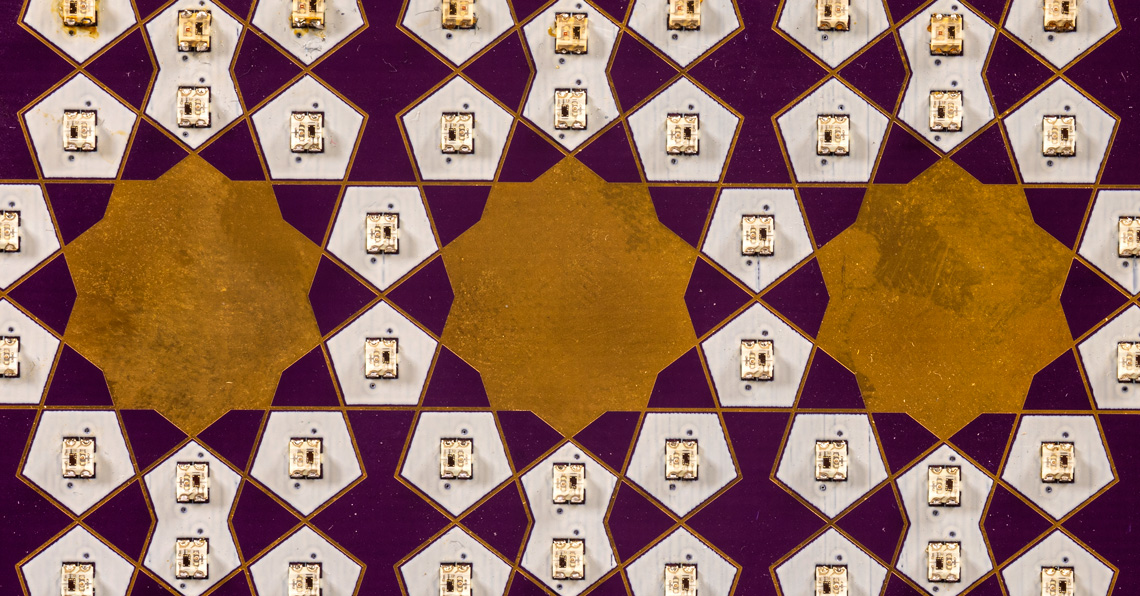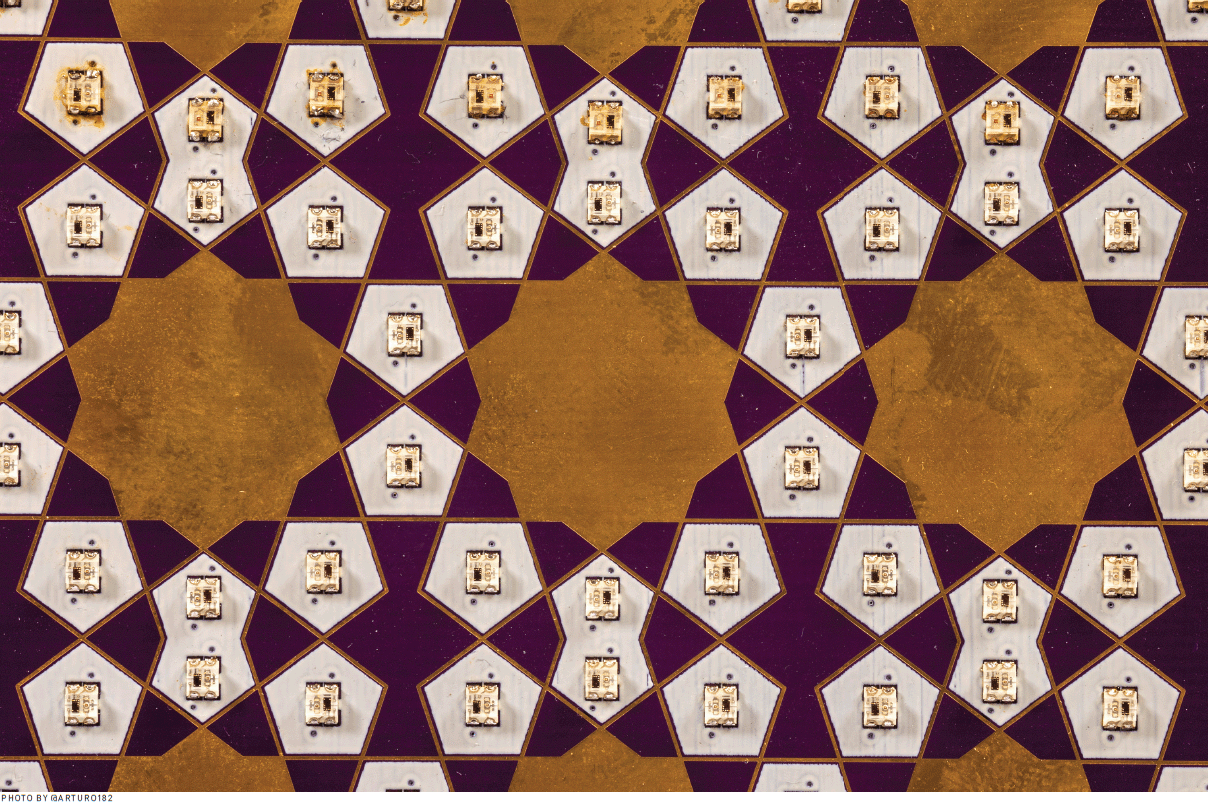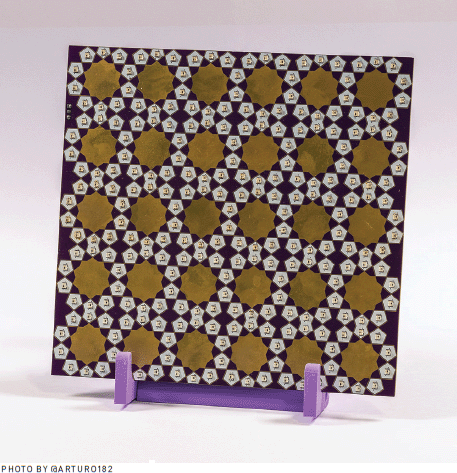Islamic Geometry-Based Moon-Period Calendar and Interaction Design
Issue: XXX.3 May + June 2023Page: 8
Digital Citation
Authors:
Anuradha Reddy
Shocked by the recent overturning of Roe v. Wade by the U.S. Supreme Court, people who menstruate worldwide were advised to back up, delete, and hide their period data from mobile apps, doctors, and partners—data that could incriminate people for exercising privacy around fetal viability and their right to abortion. And just like that, decades of struggle and hard-earned progress is replaced by profound fears of patriarchal state control over female bodies. I am angry and I cannot let the stifling narratives about periods and the predictive data practices around them define how I visualize and perceive my body's rhythms. Menstrual rhythms, which are as mundane as the moon as it cycles through its phases, have once again become a thing to be suppressed, go unmarked, and not exist unless they serve a reproductive purpose.
Menstrual rhythms have once again become a thing to be suppressed.
Raised in South India, I am not unfamiliar with hushed period-tracking etiquettes. They are passed down from grandmothers to mothers to daughters and between girlfriends and cousins, each offering advice about the myriad ways of tracking menstrual cycles. My cousins, for instance, are accustomed to following religious lunar calendars. If a religious day (e.g., a no moon day) coincides with their menstrual cycles, they refrain from worshipping on those days, which helps them keep track. At the same time, for the closest family members, it is noticeable when, on occasion, mothers and daughters don't join a routine temple visit or set foot in the kitchen (considered sacred). Even if one were excused from doing household chores with the intention to give rest to the menstruating body, my younger self found this familial custom conservative and biased. I did everything to hide my period and avoid being in my family's gaze. Thank you, period-tracking mobile apps, I thought.
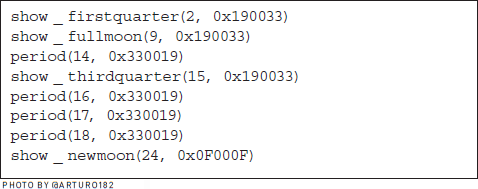 | A code snippet for a single month's tracking |
Fast-forward to the present. How did we end up in a situation where having (or not having) a period puts menstruating bodies at the risk of legal prosecution, driven by the same technologies that benefit some of us with privacy from surveillant household traditions? Certainly I am not suggesting a return to how it was, but I believe there are more-than-human values in the lunar calendar example waiting to be explored in the entanglements between different data, bodies, and naturally occurring cycles. Even still, I would like my period data to be local, private, and undisclosed to those who can cause harm by making decisions about what I'm (not) allowed to access and do with my body and its data.
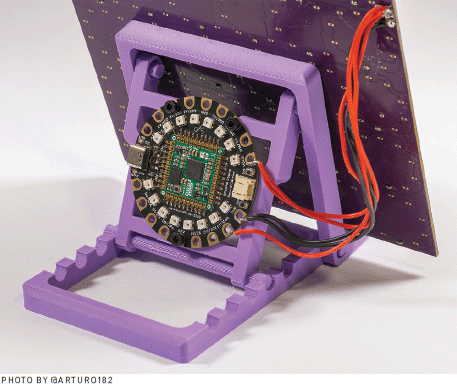 | The calendar uses the RP2040 Stamp Round Carrier board with CircuitPython to program the LEDs in delectable twilight colors (#330019, period; #190033, moon). |
I decided to experiment with a data visualization project of a moon phase and period-tracking calendar based on Islamic geometry patterns. Playing with Islamic geometry's cyclical and geometric elements has made it a joy to speculate on my body's rhythms and the moon's cycles each month through making and coding, the process for which I describe here. I also point out that I'm not pursuing any pseudo-theory that syncs moon phases with menstrual cycles. But it's interesting to put the two cycles next to each other and marvel at them, individually and together!
Stamp Round Carrier: https://lectronz.com/products/rp2040-stamp-round-carrier CircuitPython: https://circuitpython.org/ Islamic Designs for Artists and Craftspeople: https://www.amazon.com/Islamic-Designs-Artists-Craftspeople-Pictorial/dp/048625819X
Anuradha Reddy is an interdiscipLinary researcher living in Sweden. Her research combines interaction design with data technologies, creativity, and making/hacking. She is passionate about collaborative design processes that build capability in everyday users for tooling and grassroots innovation. Her recent creations tackle contemporary data technologies through craftivist and critical-making design practice. [email protected]
Copyright held by author
The Digital Library is published by the Association for Computing Machinery. Copyright © 2023 ACM, Inc.
